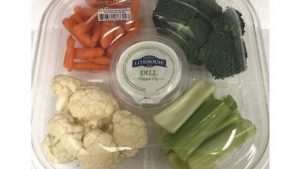The U.S Centers for Disease Control (CDC) reports several states, and the U.S. Department of Agriculture’s Food Safety and Inspection Service are investigating a multistate outbreak of Shiga toxin-producing Escherichia coli O103 infections linked to ground beef.
 Ill people in this outbreak ate ground beef from many sources. Some ground beef has been recalled, but more product contaminated with E. coli O103 may still be on the market or in freezers.
Ill people in this outbreak ate ground beef from many sources. Some ground beef has been recalled, but more product contaminated with E. coli O103 may still be on the market or in freezers.
Restaurants, retailers, and institutions should not sell or serve the following recalled ground beef products because they may be contaminated with E. coli O103 and could make people sick:
Grant Park Packing in Franklin Park, Ill., recalled 53,200 pounds of raw ground beef products on April 24, 2019.
Recalled products were sold in 40-lb. bulk cardboard boxes of “North Star Imports & Sales, LLC. 100% GROUND BEEF BULK 80% LEAN/ 20% FAT” marked “FOR INSTITUTIONAL USE ONLY” with lot code GP.1051.18 and pack dates 10/30/2018, 10/31/2018, and 11/01/2018.
Recalled products are labeled with establishment number “EST. 21781” inside the USDA mark of inspection on the boxes.
K2D Foods, doing business as Colorado Premium Foods, in Carrollton, Ga., recalledexternal icon approximately 113,424 pounds of raw ground beef products on April 23, 2019.
 Recalled products were sold in two 24-lb. vacuum-packed packages in cardboard boxes containing raw “GROUND BEEF PUCK” with “Use Thru” dates of 4/14/19, 4/17/19, 4/20/19, 4/23/19, 4/28/19, and 4/30/19.
Recalled products were sold in two 24-lb. vacuum-packed packages in cardboard boxes containing raw “GROUND BEEF PUCK” with “Use Thru” dates of 4/14/19, 4/17/19, 4/20/19, 4/23/19, 4/28/19, and 4/30/19.
Recalled products are labeled with establishment number “EST. 51308” inside the USDA mark of inspection.
Investigators continue to trace other sources for ground beef eaten by ill people in this outbreak, and more product contaminated with E. coli O103 may be recalled.
Cook ground beef hamburgers and mixtures such as meatloaf to an internal temperature of 160°F. Use a food thermometer to make sure the meat has reached a safe internal temperature. You can’t tell whether meat is safely cooked by looking at it.
For hamburgers, insert thermometer through the side of the patty until it reaches the middle.
(Piping hot doesn’t cut it, UK).















